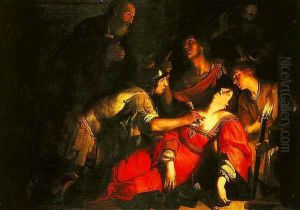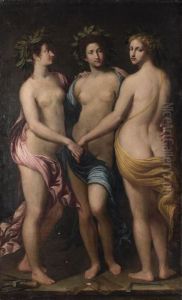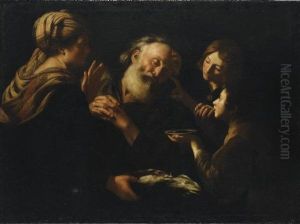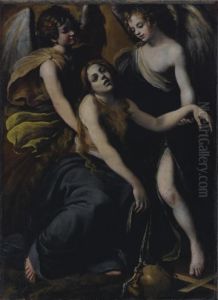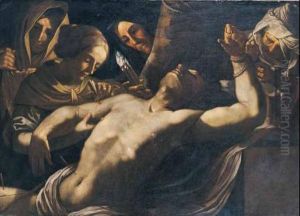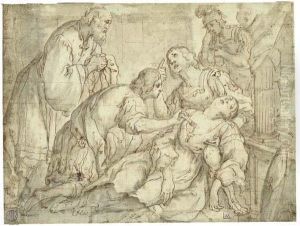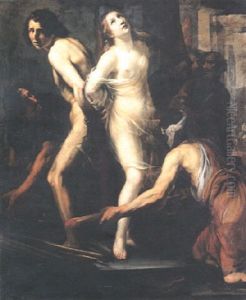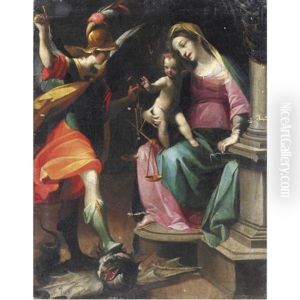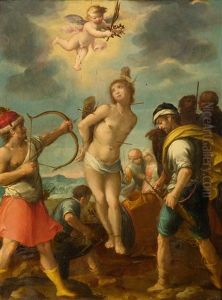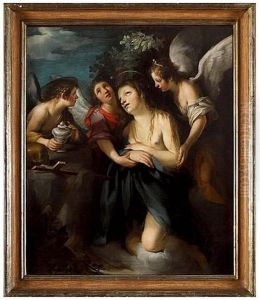Francesco Rustici Paintings
Francesco Rustici, also known as il Rustichino, was an Italian painter born in Siena in 1592. He was part of the early Baroque movement, which was characterized by its dramatic use of color and light, as well as a more naturalistic approach to depicting subjects. Rustici's work, however, is not as well known as that of some of his contemporaries, partly because of his early death at the age of 34 and partly due to the overshadowing fame of other Baroque artists.
Rustici was deeply influenced by the works of Caravaggio, as were many artists of his time. This influence is evident in his use of chiaroscuro, the technique of using strong contrasts between light and dark to achieve a sense of volume in modeling three-dimensional objects and figures. Despite the clear influence of Caravaggio, Rustici developed his own unique style, characterized by a softer approach to chiaroscuro and a warmer palette.
During his brief career, Rustici created a number of religious paintings, which were his primary focus. His works were mainly commissioned by local churches and included altarpieces and frescoes. These pieces were celebrated for their emotional intensity and for the artist's ability to convey deep spiritual themes through his subjects.
Unfortunately, much of Rustici's work has not survived, or its attribution remains uncertain, which has made it difficult for art historians to fully assess his impact on the Baroque movement. What is known, though, is that his artistic legacy was appreciated by his contemporaries, and he played a role in the development of Baroque art in Italy, particularly in the region of Siena.
Rustici's life was cut short when he died in Siena in 1626. Despite the brevity of his career, his contributions to the Baroque style, especially in terms of his use of light and shadow, and his emotional and spiritual depth, have ensured that he remains a figure of interest to art historians and enthusiasts.
